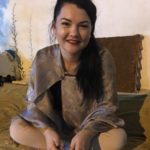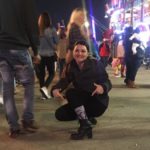Race, the Very Confusing Social Construct
Growing up in my community, I was surrounded by people of all skin colors, quite literally.
The spectrum of phenotype down home in southeast NC is so vast, many who travel through are astounded and intrigued by it. They’ve never seen anything like it before.
Even though we all looked different, we had a couple of things in common, like our unique accent, or the fact that we identified with our indigeneity in one way or another.
Some decide to live their culture all the time, and for some they identify other ways, but do acknowledge their indigenous ancestry.
Let me make one thing clear: the choice in how we identify is ours. Not yours.
Every single Native person I’ve ever met and asked has had this same experience: to outsiders they don’t “look Indian,” whatever that means.
Their skin is too dark, the texture of their hair is different than what they think it should be, they don’t have “high cheekbones,” they have freckles, they have lighter hair, they have curly hair…the list goes on.
After the statement “you don’t look indian,” every Native person knows what comes next…drumroll…”what percent indian are you?”
It’s probably one of the most disrespectful questions you can ask an indigenous person.
Does anyone ever ask you how Italian you are?
Does anyone ever ask you how Irish you are?
Does anyone ever ask you how French you are?
Look, let me put it this way.
In America, most perceive Irish folk and Italian folk both as “white.”
Why though?
Their skin color is usually very different.
Their hair color is usually very different.
So why then are they both considered “white.”
The Complexity of “Race” in NC Tribal Communities
When many Americans think of Natives, they think of Natives who live in the midwest.
It’s very hard for some to wrap their heads around this fact: Native people from differing tribes often have differing cultures, histories etc. Even though Tuscarora folks in NC are Native, and Lakota folks are Native, we have very different ways of life.
Native folks in the midwest lived in teepees, we lived in longhouses.
Native folks in the midwest hunted buffalo, we lived off fish or deer.
Different languages.
Different histories.
What’s more unique about Natives in NC is that this was what I would call, frontier land back in the day.
Our folks here certainly hadn’t seen Europeans before.
We were interacting with Europeans before this land became America.
When the “Lost” Colony was in desperate need, our people came to them and offered them refuge. I say “Lost” because they were not lost. If historians would have listened to our people years ago, they would know that we absorbed them.
Of course it wasn’t all Disney, but the simple fact is we took them in.
Like we did other Europeans who were unhappy with colonial life.
Or freed slaves or runaway slaves who were looking for safety in numbers.
When we took people in, they were Tuscarora.
When our Tuscarora people had children with their children, they were not “half Tuscarora,” they simply were “Tuscarora.”
Why you ask?
Because for us it wasn’t about race or blood quantum, it was about culture.
Our people have been intermarrying for hundreds of years.
Even though our people are more diverse than most tribes, that does not make us any less Native.
Fast Forward to 2020
Now I just said our people have been intermarrying for years, that is a fact.
But we have maintained our Native culture and identity since before European contact.
We have our own Internalized oppression.
I can’t express the amount of frustration I used to have from folks who would romanticize my community as if it didn’t have its own internal issues.
Colorism exists. Racism exists. It can get pretty complex. It can get hurtful and ugly.
Some who are darker or who have a different hair texture are seen as “less native” than those who are lighter.
A Native from another tribe who has a different history than you says you’re from a “fake tribe” or you’re too “x, y, z.” They don’t know why they feel this way, they just see what’s on the surface and for some reason that makes them uncomfortable. You internalize that, and it makes you self-conscious.
It triggers you in some way.
Why did that Native person say that to you? It probably comes from having so many non-Natives say to them “you don’t look Indian to me,” sometimes followed up with “my great-grandma was a Cherokee princess.” They themselves struggle with their own internalized oppression.
We fight amongst ourselves. With other Native people, with our own people, with ourselves.
We live in a country where it’s impossible to be “Native enough.”
You’re policed on everything as it is present day.
How dare you have members with Black skin!
…the kicker is they usually don’t care about the history that led to some of our members having Black skin.
Some members see intermixing as a new thing, and honey have I got news for you.
They think if our folks continue to mix with other ethnicities and races, that eventually we’ll be extinct, but we’ll never be extinct as long as we continue to carry the torch which is our culture.
It’s nothing to be afraid or ashamed of.
Intermixing has made us a beautiful kind of unique.
We have to stop thinking everyone else is the enemy, when in fact the enemy lies inside of us.
We must face this fact, we all have biases.
Though it’s how we confront ourselves in the mirror every-single-day and we change our perception. We learn from our mistakes and our backwards beliefs, and we teach this new, more inclusive knowledge to our children, who pass it onto theirs and on and on.
We pave the way for a better tomorrow for ourselves, and for our people.
 Nicki (Faircloth) Bani Mustafa originates from Scotland and Robeson Counties and identifies as both Lumbee and Tuscarora.
Nicki (Faircloth) Bani Mustafa originates from Scotland and Robeson Counties and identifies as both Lumbee and Tuscarora.


Just now discovering my heritage and you have no idea how helpful this article is.